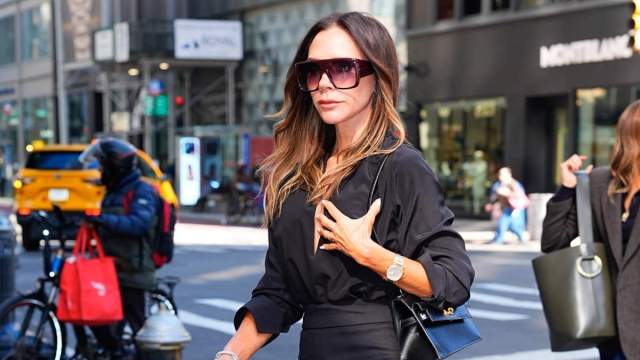OXFORDSHIRE, United Kingdom — In the second session of VOICES 2025, BoF’s annual gathering of big thinkers, a cross section of the fashion industry from executives to entrepreneurs and influencers gave their take on the sector’s future.
Prada chief executive Andrea Guerra explained why he would much rather speak about creativity and innovation than prices (it isn’t what you think). He also gave his thoughts on Miu Miu’s torrid growth and Prada’s acquisition of Versace.
Susanna Lau, Bryan Yambao, Camille Charrière and Gstaad Guy discussed the role of influencers in the fashion industry while Li Edelkoort, ten years after making a splash with her “anti-fashion” manifesto at the first VOICES back in 2016, outlined how the industry has changed in the past decade and where we go from here.
A panel headed up by Gemma D’Auria, global co-leader of apparel, fashion & luxury for McKinsey, discussed some of the key findings in this year’s “The State of Fashion,” BoF and McKinsey’s annual report on the industry.
Another panel unpacked the shocking numbers surrounding unwanted apparel sent to African countries and how the West can stop so-called “waste colonialism.” How can fashion tap into unreasonable hospitality? That was also on the agenda.
The author has shared a YouTube video.You will need to accept and consent to the use of cookies and similar technologies by our third-party partners (including: YouTube, Instagram or Twitter), in order to view embedded content in this article and others you may visit in future.
Price vs. Desirability
“If we’re talking about prices, we have failed on other issues,” Prada’s Guerra told BoF’s chief executive Imran Amed. “If I’m not able to sell you an emotion and we discuss pricing, then I failed on the first part. I want to discuss desirability, creativity, innovation.”
That was Guerra’s response when queried about the punchy price hikes that have become common in the fashion industry (including at Prada) in recent years, emphasising the “desirability of your product and your ability to excite dreams.”
“Brands have gotten lost in the past 10 years,” Guerra said.
He also addressed Prada’s aim to stick a soft landing at fast-growing Miu Miu as growth normalises and hinted at Prada heir Lorenzo Bertelli’s new role as executive chairman of Versace, which the Prada group is acquiring for €1.25 billion ($1.45 billion) in a deal expected to close the first week of December.
The Influencer Economy 20 Years Later
Susanna Lau, Bryan Yambao, Camille Charrière and Gstaad Guy talked about finding their voices, speaking to their communities, the professionalisation of the influencer economy, the shifting balance of power between influencers and brands and the wider luxury malaise.
“There’s nothing luxurious about being everywhere,” said Yambao, comparing major luxury brands to Coca-Cola and Nike, while pointing to the success of Hermès.
Gstaad Guy turned on his signature charm, as he discussed using humour to tell brand stories with big impact, but lamented the state of the luxury sector, neatly encapsulating his critique: “Consumers are getting smarter, products are getting stupider.”
Meanwhile, Lau noted how magazines were adopting the influencer strategies they once sneered at and Charrière addressed the growing power of brands — and how she’s pushing back.
“LVMH got me on call with seven lawyers talking about how it was going to be written in my contract that I had to be neutral politically because I’d gone to a protest,” she revealed. “I’m not a brand. I’m an ambassador for you, but we are people, not brands.”
The Next 10 Years
Trend forecaster Li Edelkoort’s first appearance at VOICES a decade ago produced a provocative take on the key issues dogging the industry. This time she gave an update and took a look into the future.
Her view: fashion is becoming more conventional, traditional and ancestral. She cited the death of Virgil Abloh as a turning point for the industry with a move from t-shirts and sneakers to button-downs and loafers.
She also sees fashion becoming “magical and female” after a period in which the opposite sex had a near lock on creative roles at the biggest fashion houses.
“They not only design garments, but they also design ways of doing business,” she said. “They are able to read women’s minds, contrary to male designers.”
Among her other predictions: fashion is becoming childish, prodigious, outsider and animated; fashion is becoming focused, collective and spiritual; and fashion is becoming illuminated, robotic and Arts and Crafts.
BoF VOICES 2025 is made possible in part by our partners McKinsey & Company, Amazon Fashion, Pixel Moda, Value Retail, Certilogo, Swap Commerce, Soho House, Wheely and Getty Images.


